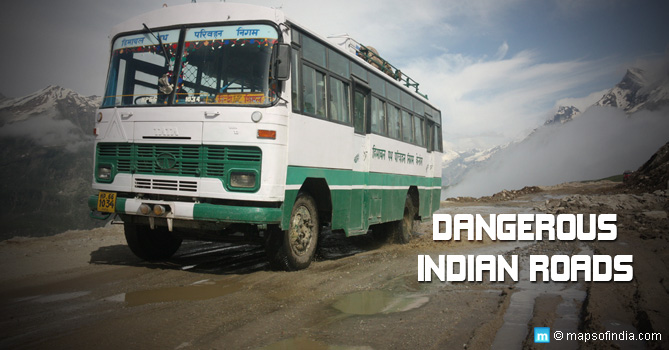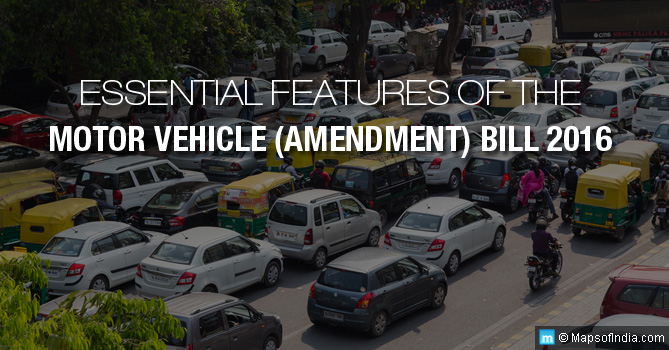Earlier this month, Minister for Road Transport and Highways Nitin Gadkari, released ‘Roads Accidents in India – 2015 Report’ and the picture that emerges is rather grim.
India is one of the fastest growing automobile markets in the world, along with a rapidly expanding road and highway network. However, with more automobiles in all classes being introduced each month, the corresponding rate of accidents is also very high.
As per ‘World Road Statistics 2015’ released by International Road Federation, Geneva, India recorded the second highest number of road accident fatalities per 100,000 population, which was at 11. Russian Federation topped the list at 19 per 100,000.
India is signatory to the ‘Brasilia Declaration’ and has committed to reduce road accidents by 50% by 2020 – just four years from now. A quick look at the facts below will show how ambitious that goal is.
‘Disturbing’ facts in India
1,374 road accidents take place every day resulting in 400 deaths. This number translates to 57 accidents every average hour and resulting in the deaths of 17. That’s a high number by any standard and should be a major cause for worry for all stakeholders that use and manage roads and highways in the country.
The total number of road accidents in 2015 was 5,01,423 as against 4,89,400 in 2014, representing an increase of 2.5%. The resulting number of deaths in 2015 was 1,46,133, as against 1,39,671, marking an increase of 4.6%.
The number of people injured from these accidents was 5,00,279 in 2015, as against 4,93,474 in 2014, an increase of 1.4%.
In 2015, 54.1% of those killed belonged to the 15-30 year age group.
The ‘Rogue’ 13
The following were top 13 states which recorded 86.7% of all road accidents in 2015:
| Sl.No | States | No. of accidents |
|---|---|---|
| 1 | Tamil Nadu | 69059 |
| 2 | Maharashtra | 63805 |
| 3 | Madhya Pradesh | 54947 |
| 4 | Karnataka | 44011 |
| 5 | Kerala | 39014 |
| 6 | Uttar Pradesh | 32385 |
| 7 | Andhra Pradesh | 24258 |
| 8 | Rajasthan | 24072 |
| 9 | Gujarat | 23183 |
| 10 | Telangana | 21252 |
| 11 | Chhattisgarh | 14446 |
| 12 | West Bengal | 13208 |
| 13 | Haryana | 11174 |
Top 13 states that accounted for 83.6% of all road accident fatalities
| Sl.No | States | No. of accidents |
|---|---|---|
| 1 | Uttar Pradesh | 17666 |
| 2 | Tamil Nadu15,642 | 15642 |
| 3 | Maharashtra | 13212 |
| 4 | Karnataka | 10856 |
| 5 | Rajasthan | 10510 |
| 6 | Madhya Pradesh | 9314 |
| 7 | Andhra Pradesh | 8297 |
| 8 | Gujarat | 8119 |
| 9 | Telangana | 7110 |
| 10 | West Bengal | 6234 |
| 11 | Punjab | 4893 |
| 12 | Haryana | 4879 |
| 13 | Other states/UTs | 23980 |
Top 13 states that accounted for 87.2% of all road accident injuries:
| Sl.No | States | No. of accidents |
|---|---|---|
| 1 | Tamil Nadu | 79746 |
| 2 | Karnataka | 56971 |
| 3 | Madhya Pradesh | 55815 |
| 4 | Kerala | 43735 |
| 5 | Maharashtra | 39606 |
| 6 | Andhra Pradesh | 29439 |
| 7 | Rajasthan | 26153 |
| 8 | Uttar Pradesh | 23305 |
| 9 | Telangana | 22948 |
| 10 | Gujarat | 21448 |
| 11 | Chhattisgarh | 13426 |
| 12 | Odisha | 11825 |
| 13 | West Bengal | 11794 |
Total number of injured persons in 2015 were 5,00,279.
Breakdown of ‘type of road’ where maximum accidents have taken place:
Maximum accidents were recorded on non-highway roads at 47.6%. This was followed by accidents on National Highways (NH) at 28.4% and State Highways at 24.0%.
However, National Highways recorded the maximum number of fatalities at 51,204 or 35% of all road accident fatalities in 2015. This was an increase of 7.5% over 2014 that saw 47,649 persons lose their lives.
It was found that maximum road accidents took place between 1500-1800 hrs (17.5%) and 1800-2100 hrs (17.3%). It was noticed that the month of May recorded the highest number of accidents, while road ‘junctions’ witnessed the maximum accidents.
Number of accidents recorded by road user category:
| Two-wheelers | 31.50% |
| Car / taxis / vans / light & medium vehicles | 17.20% |
| Other vehicles | 12.70% |
| Trucks | 11.00% |
| Pedestrians | 9.50% |
| Buses | 7.40% |
| Auto Rickshaws | 5.00% |
| Cycle rickshaws / hand carts / animal drawn carts etc | 3.20% |
| Bicycles | 2.10% |
Steps the government can take to improve road safety
- The first thing the government needs to do is to completely digitize issuance of driver’s licence procedure and ensure driving licence is only given to those undertaking the mandatory simulator test that records every response of the driver to different driving conditions and his understanding of road signage. The present system is open to misuse, manipulation and corruption.
- The government has to improve the quality of roads during road building and ensure investment in subsequent maintenance. The present system of ‘contractor’ driven road building with very little accountability or penalties must go. What is needed is full accountability backed with severe penal action in cases of corruption or inefficiency.
- The government must invest in road lighting, especially at junctions, along with clear and reflective signage system in English, Hindi and the local state language.
- Government must significantly improve its highway patrolling, especially at night, to check incidence of drunken driving, over speeding, rash driving, over loading of vehicles, etc. Unless the checks are frequent and regular, drivers will continue to misuse the roads.
- The government must ensure ‘road use culture’ is introduced as part of regular curriculum at the school level, where all students are made aware of their responsibility as future drivers. Similar programs must also be extended to adults and truck & bus drivers, on a regular basis.
- ‘Pedestrian etiquette’ will go a long way to curb cases of pedestrian deaths and right from school onwards, everyone must be taught this. In 2015, 9.5% of accidents recorded involved pedestrians.
- Scientific traffic management and monitoring is essential to ensure road safety and efficient use of road space. Modern road signaling systems can improve traffic flow in real time, and when backed with adequate camera surveillance, can help in monitoring, penalizing, and if needed, arresting road abusers.
- Increase in traffic policing in towns and cities will go a long way in disciplining road users. The best example of this can be seen in the use of car safety belts. There was resistance to usage of car safety belts when it was first introduced in India. However, with regular checks and penalizing, using safety belts has now become a habit and requires very little monitoring.
- The same impact can be achieved in cases of red light jumping, frequent lane changing, high speed driving and drunken driving, all of which together can significantly bring down the number of road accidents.
- The government must increase fines for traffic violations. Singapore is a good example of how high fines hurt economically and acts as the best deterrence.
- Another step is to grade violators by first time, second time offence and habitual offenders. A third time offence must automatically invite suspension or cancellation of license, depending on the level of offence.
- All offences must be digitally recorded and visible online to law enforcement agencies across states. Maintaining an online database with information on violators available in real time will ensure quick action on part of Police and the message will run across all potential traffic violators.
- Lastly, trauma care units must be established along National Highways and could serve both highways accidents victims as also local people.
The government fully understands the above but is it ready to comprehensively take them up? Nitin Gadkari, our Transport Minister, seems committed to improving road safety. Let’s see if we can meet the Brasilia commitment of bringing down road accidents to 50% by 2020.
Read More…





